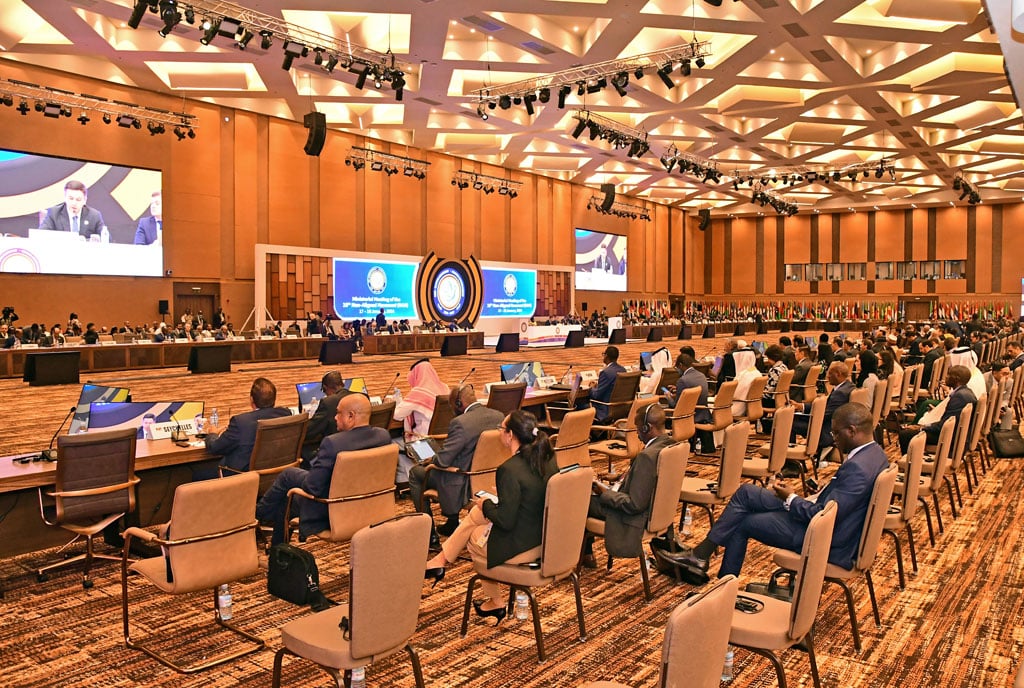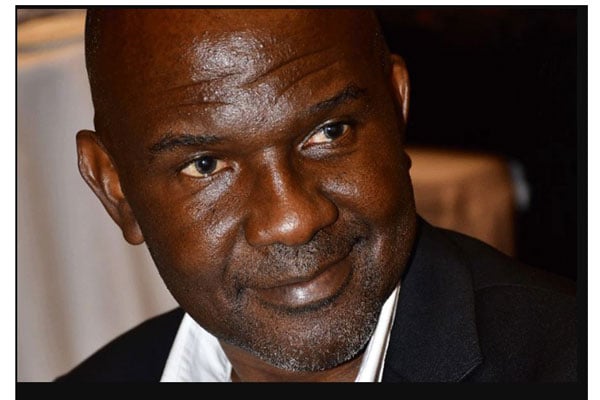Prime
NAM summit resurrects Shs500b Chogm memories

Delegates during the opening of the ministerial meeting at the 19th NAM summit in Munyonyo, Kampala, on January 15, 2024. PHOTO/ABUBAKER LUBOWA.
What you need to know:
- The NAM and Chogm are the two global events that have attracted the biggest number of heads of state and foreign delegations in this century
Uganda hosting the Non-Aligned Movement (NAM) summit this month brought memories of the November 2007 Commonwealth Heads of Government Meeting (Chogm) in Uganda.
The NAM and Chogm are the two global events that have attracted the biggest number of heads of state and foreign delegations in this century.
The Chogm is a 56-member community of former colonies of Britain, while the NAM has 120 members, an organisation with the second largest membership of states after the United Nations Organisation.
Given the high-profile nature of these events, the Uganda government invested heavily in the preparations of the events to secure the delegates and also give the country a good image.
The total Chogm 2007 budget was about Shs500 billion. After the summit, the Parliament’s Public Accounts Committee chaired by Budadiri West MP Nandala Mafabi, examined the Auditor General’s report on Chogm expenditures and found gross abuse of the funds.
It was the President who requested the Auditor General to conduct the audit. Former Vice President Gilbert Bukenya chaired the Cabinet Chogm sub-committee. The decision of the sub-committee in regard to Chogm activities was final.
Corruption scandals
To avoid a repeat of Chogm scandals after NAM summit, the President established an executive organising committee chaired by the head of Public Service and Secretary to Cabinet, Ms Lucy Nakyobe. Her first assignment was to review the budget and other related activities. As of November last year, the planned total expenditure on NAM activities stood at Shs66 billion. The government, through the Ministry of Foreign Affairs, has since tabled a request for additional funding to a tune of Shs15b to facilitate NAM chairmanship activities.
Both events were billed as steppingstones to Uganda’s leap to foreign investment in the industry, services and tourism sectors.
The government invested in hospitality, infrastructure, human resource, equipment and security, but there is a huge difference between the preparations of the two events.
Entebbe airport
During the Chogm 2007, the Entebbe International Airport was expanded focusing on VIP lounge, arrival and departure terminals and aviation equipment.
Although the expansion was done in time then, the airport was overwhelmed by the number of visitors’ planes that officials struggled to find where to park them.
This time round, the event occurred when the expansion project of the airport was ongoing and the government was able to complete it before the NAM summit started.

The arrivals and pick-up area at the modified Entebbe International Airport terminal. PHOTO/ BUSEIN SAMILU
The Minister of Works and Transport, Gen Edward Katumba Wamala, said they have enough space for the visitors’ planes to park.
Roads
Unlike during the Chogm when there was only one paved road connecting to the airport, the NAM summit found several alternatives like the Entebbe Expressway.
The government has concentrated on maintaining the route which the delegates would use.
Streetlights have been erected from Entebbe International Airport to Kampala. Owners of buildings along the route used by the delegates have been forced to renovate their structures and also pave their yards. In 2007, it was a different story.

Queen Elizabeth II and President Museveni during the 2007 Commonwealth Heads of Government Meeting (Chogm) meeting. PHOTO/FILE
City authorities forced all owners of all buildings in the city, whether they were along the visitors’ route or not to renovate and paint their structures.
Those buildings or businesses that were thought not to be appealing to the visitors’ eyes were hidden behind advertisement boards or curtains.
Police stations along the major routes, which had not been renovated or painted, were literally wrapped in advertisement billboards, while coffin sellers at Katwe in Kampala were told to keep their items off display on the main road and also hide them behind curtains during the Chogm.
City roads that were far away from the main visitors’ routes were also maintained. In other words, the entire road network in the central business district and along the main routes got a facelift. For the first time in many years, tarmac in the city had its original black colour from the brown colour, which was caused by dust.
It was during Chogm that the practice of cleaning the road daily was started. At the time, contractors used heavy equipment to clean the city.
Investigators later found corruption in the construction and rehabilitation of roads for Chogm, leading to the arrest and prosecution of several government officials in the Ministry of Works and Transport.
The Auditor General investigators later found out that there was corruption in the road projects to an extent that some roads were constructed in residential areas or businesses of government officials or their relatives.
There were no heaps of uncollected garbage along the roads and in the city bins.
Kampala City Council (now Kampala Capital City Authority) officials deployed personnel to arrest any person littering, easing themselves along the roadside or even spitting in public places.
Members of the public complied with the city laws to the letter.

Workers put final touches on the refurbished Queens Way in Kampala on January 8 ahead of the Non-Aligned Movement (NAM) summit which started on January 15, 2024. PHOTO/ ISAAC KASAMANI.
Months before and after the Chogm, boda boda riders and taxi drivers, especially those on Entebbe Road and in the city centre, complied with the traffic standards.
Motorists did abide by the traffic regulations for fear that they were being watched on the police CCTV cameras that had just been installed in the city. The first CCTV camera project was intended to monitor activities and traffic on the roads during the Chogm.
Monitoring and coordinating activities on the roads is now better for the NAM summit since all the roads are covered by CCTV cameras. From the command centre, the officers can monitor traffic and any incident from the airport to the city centre and beyond.
Security
Security has been key in both events. During the Chogm events, the security was led by the police. In fact, the police leadership recalled more than 5,000 police recruits undergoing training at Police Training School, Kabalye in Masindi District.
The recruits, both police cadets and probation police constables, were deployed along the roads to ensure security was guaranteed.
Fifteen years later, the police seem to have taken a peripheral role in the security of the NAM summit.
Uganda Peoples Defence Forces (UPDF) soldiers are in charge of all points, including traffic on the main NAM routes, as police officers look on.
Transport for delegates
The issue of which brand of motor vehicles to be used by the delegates and who procures them haven’t been a big one this time round as it was during Chogm.
During Chogm, the government procured 204 luxurious vehicles, including BMWs, from Motorcare to carry delegates, leading to a protracted legal battle with Spear Motors after the events.
Spear Motors alleged that they owned the tender but it had been given to another company illegally.
Prof Gilbert Bukenya, then vice president, and Motorcare officials were accused by government prosecutors of abuse of office in awarding the motor vehicle deal.
The criminal cases against Prof Bukenya and others didn’t succeed in the High Court.
This time round, China delivered motor vehicles to transport delegates for the NAM summit.

The head of Public Service and Chief NAM organiser, Ms Lucy Nakyobe, inspects the Chinese-donated cars ahead of the NAM Summit. PHOTO/COURTESY
Although they were not enough, the government turned to the luxurious vehicles that were in the possession of its ministers and officials.
Similarities
Both events have some similarities like the late execution of services.
Like during Chogm, during NAM, beautification of the city and the delegates’ routes have been done at the last minute. Some roads on the main route for the NAM delegates were paved and cleaned a day before the event.
We now wait for an audit of the NAM event to have a clear picture of whether it met the standards or it was also engrossed in corruption like Chogm.
Events
Chogm Vs NAM
The Chogm is a 56-member community of former colonies of Britain, while the NAM has 120 members, an organisation with the second largest membership of states after the United Nations Organisation.
Given the high-profile nature of these events, the Uganda government invested heavily in the preparations of the events to secure the delegates and also give the country a good image.




